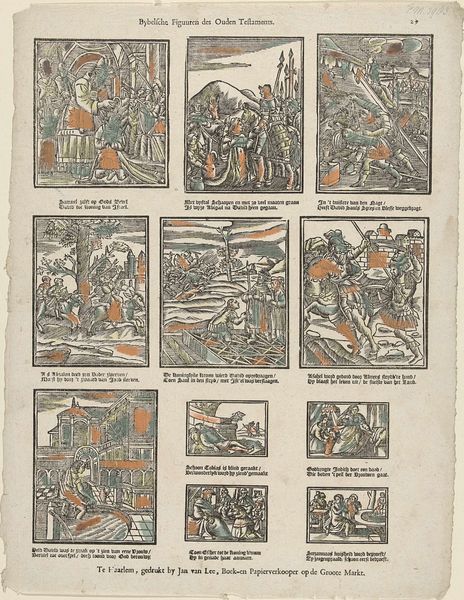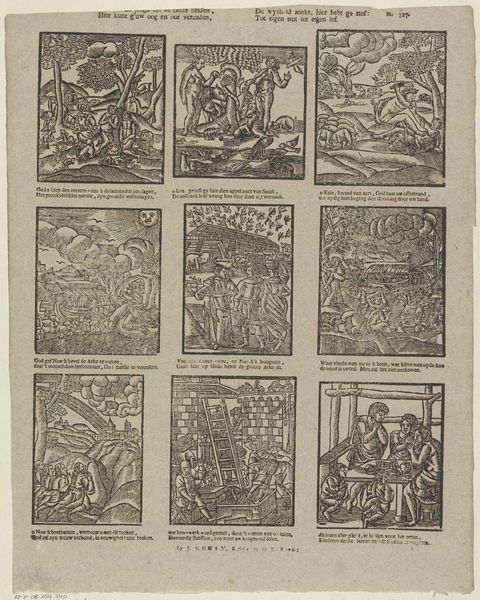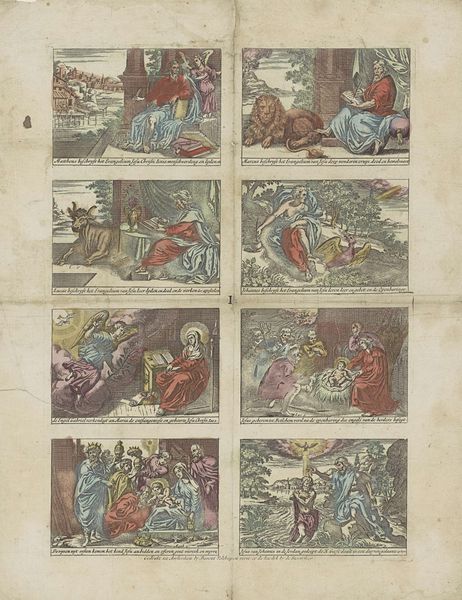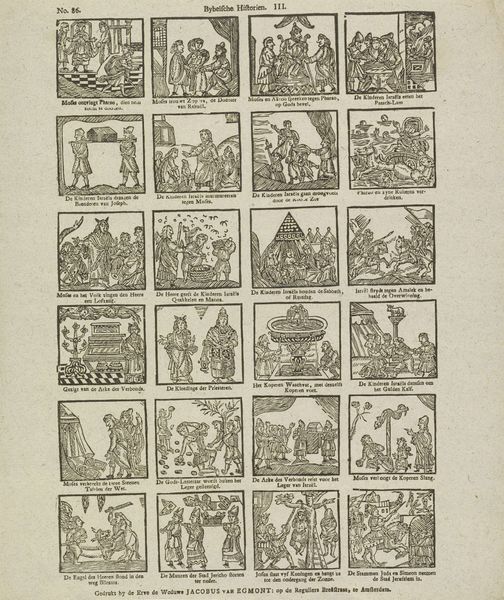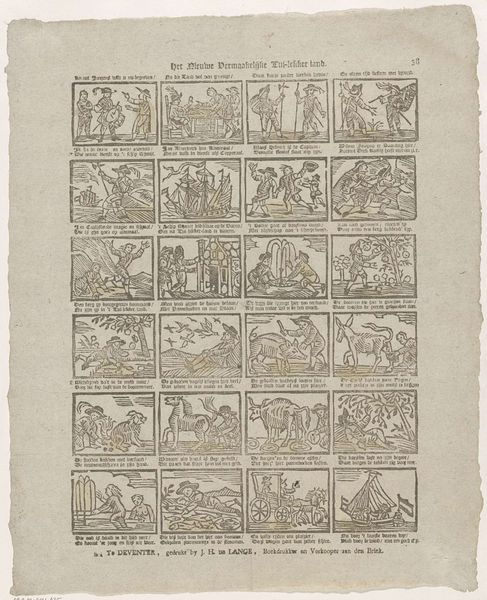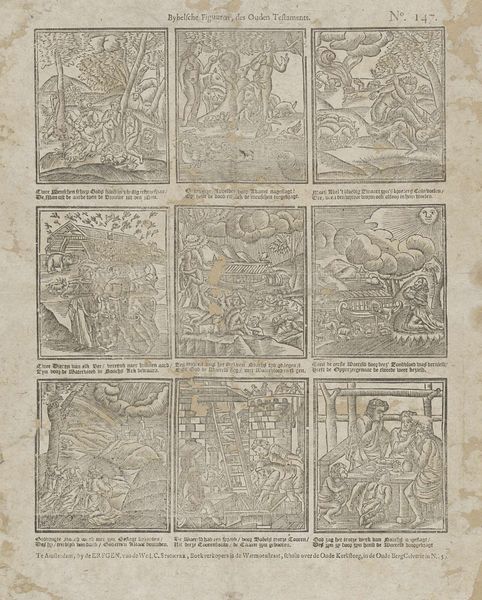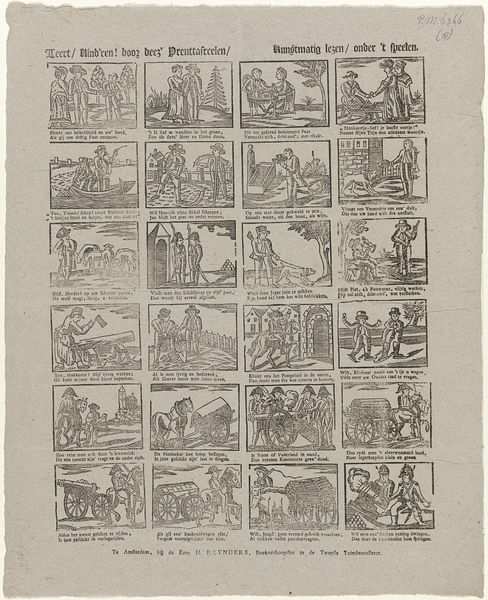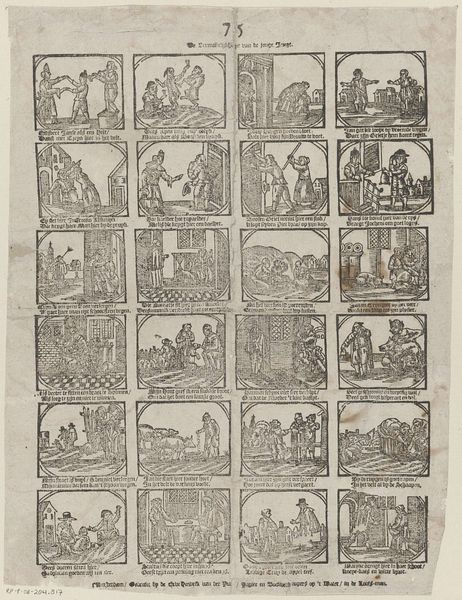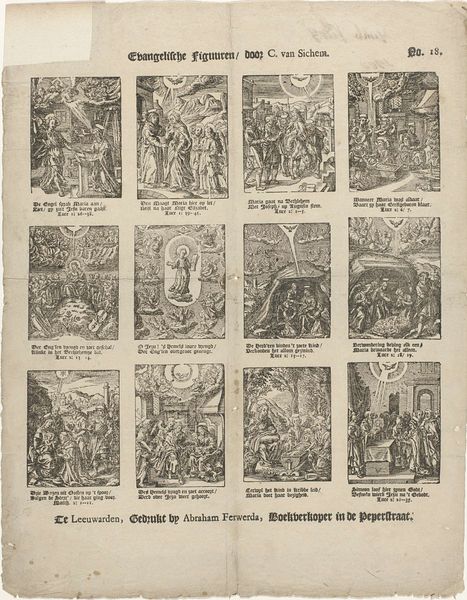
Jonge jeugd laat dees historie / Uw steeds strekke tot memorie 1725 - 1780
0:00
0:00
print, woodcut, engraving
#
narrative-art
#
dutch-golden-age
# print
#
old engraving style
#
woodcut
#
engraving
Dimensions: height 422 mm, width 308 mm
Copyright: Rijks Museum: Open Domain
Curator: This engraving from the Dutch Golden Age, titled "Jonge jeugd laat dees historie / Uw steeds strekke tot memorie", was created sometime between 1725 and 1780. It's currently held in the Rijksmuseum. It comes to us from Johannes (II) Kannewet and employs woodcut and engraving techniques. Editor: My first thought is just how accessible it must have been. The repeating narrative vignettes and the relatively simple material choices tell a story about the society which consumed such objects. Curator: Absolutely. It speaks to the didactic nature of art at the time. Consider the title; a reminder that youth should always take historical events as a moment for moral learning. Editor: The labor too. To create such uniformity through printmaking—there was clearly a workshop involved. Think of the apprentices, grinding the pigment, preparing the wood blocks, essentially producing images en masse for popular consumption. It becomes an interesting case of mass media, pre-photography. Curator: These aren't scenes created for aesthetic pleasure; these small scenes provided examples for young people on how to be good citizens. To that end, we see its social role taking precedence over pure visual craft. Editor: But I don't think we can disregard the craft involved. The careful carving of the wood, the inking, the precise printing—this was skilled labor! These printed images played a significant role in disseminating stories that supported a burgeoning capitalist system by shaping a populace attuned to such sensibilities. The imagery helped cement those ideologies. Curator: It’s true; prints like this held incredible power. They influenced social values, shaped public opinion, and essentially democratized storytelling through reproducible imagery. What the buyer may do with them afterwards in the home is a complete other area of interest too... Editor: And that distribution, getting into the hands of those it needed to get to—considering those implications and how these narratives become internalized as cultural beliefs—there’s much to unpack when we consider art production and society as a whole. Curator: Indeed. When you consider this modest engraving you are peering into so much more about how society communicated at this historical juncture. Editor: A nice encapsulation; one final reason to delve deeper into the study of these artifacts, for it is when art’s tangible processes converge with our broader historical perspective that everything clicks.
Comments
No comments
Be the first to comment and join the conversation on the ultimate creative platform.
